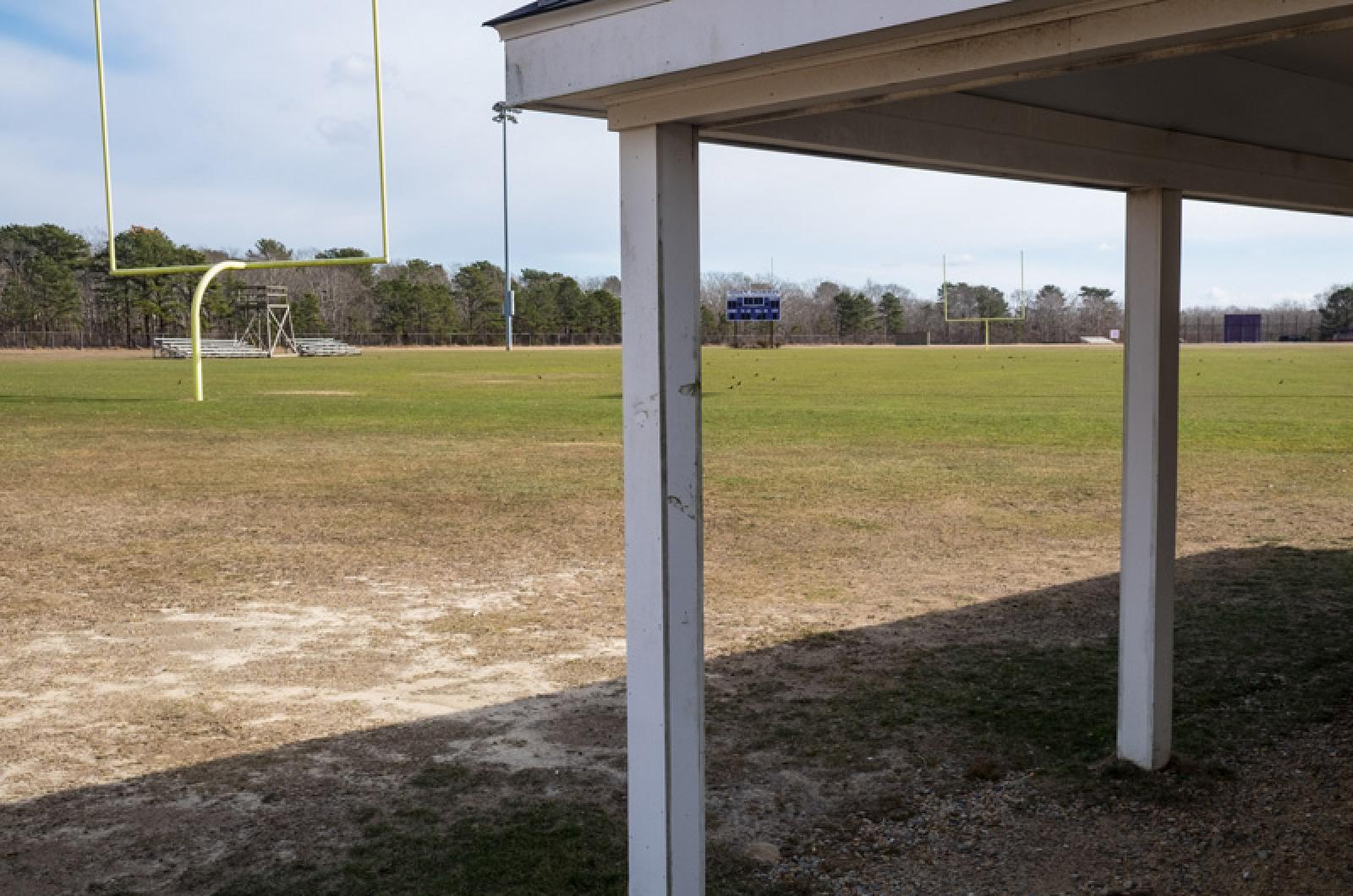With spring sports about to get underway Monday, improvements on the track and fields at the Martha’s Vineyard Regional High School have seen little progress. And two opposing groups who wanted to assist the school with the project, MV@Play and the Field Fund, say talks with the school have stalled.
“We haven’t been part of the conversation since September 2017,” said Mollie Doyle, founding member of the Field Fund, a group advocating for grass fields. She said the Field Fund has gone on to complete pilot projects on fields at the West Tisbury School, Oak Bluffs School, and Chilmark School, but conversations with the high school stopped after they failed reach an agreement last year.
“What’s sad to me is nothing got done,” said David Wallis, president of MV@Play, the group that advocated for synthetic turf fields at the high school. “I guess that’s sour grapes, but I think that it’s just unfortunate that they are not even at the starting line again.”
MV@Play secretary Terry Donahue said the group is still willing to help. “MV@Play is not dead,” he told the Gazette. “We’re dormant.”
Both groups had offered to finance the track and field renovations.
“It’s incredibly frustrating, no doubt, for all involved: student athletes, coaches, administration, the community at large,” said Robert Lionette, current high school committee member and former chairman.
On Thursday evening, the school facilities subcommittee planned to meet to discuss the status of track in the context of the wider needs of the school.
In the spring of 2016, the nonprofit MV@Play pitched a three-phase, multi-million dollar project to the high school committee to update all the fields at the high school and replace some of them with synthetic turf. The group had partnered with the engineering firm Gale Associates to form a plan. The high school committee signed a licensing agreement with MV@Play.
But the idea almost immediately became controversial when some Islanders voiced concerns about the possible health effects of the rubber material used in some artificial turf. Another concern was the high cost of replacing turf fields in the future.
The following year, a group called Vineyarders for Grass Fields formed as an alternative to MV@Play to lobby for grass fields. The group eventually evolved into the Field Fund. In August 2017, MV@Play stepped aside to allow the Field Fund to go forward with negotiations with the high school. But negotiations between the high school and the Field Fund later fell apart, partly because the high school was unable to offer a strong enough commitment to a future of only grass fields.
Now after two years of controversy and discussion with the third parties, high school committee leaders say they need to take a new tack.
“We need to take the bull by the horns,” superintendent Matthew D’Andrea told the Gazette by phone Wednesday. “Anyone who wants to assist us, it’s welcome, but we need to develop our own vision.”
He said that vision will have a much broader scope because the track and fields are not the only areas on the campus in need of improvement.
Mr. Lionette agreed. “Say we rebuild a $3 million track and then find out we needed that space for renovation of the high school,” he said. “The prospect of making that big a blunder really gives us pause.”
At a high school committee meeting earlier this month, members formed a building committee to put together a plan for extensive renovations of the entire campus. The committee will consist of a selectman from each town along with four school committee members.
There is no definitive plan yet, but the needs are clear. A 2015 study on the structure of the building — focusing on walls, windows, doors and the roof — found improvement needs adding up to an estimated price tag of almost $3 million.
An evaluation of the school’s HVAC systems the same year found that none of the heating, ventilation, and air conditioning infrastructure was up to date. The evaluation recommended replacing the HVAC system in the school, which would cost more than $4 million.
The failed track was condemned for use by student athletes in 2016 due to its poor condition. In fall of 2017, the school committee allocated $148,400 to resurface it for the short term.
Mr. D’Andrea said the new building committee could use preliminary drawings commissioned from Tappé architects as a starting point for discussions about an overhaul of the whole campus.
He will also be submitting a fourth application for funding from the Massachusetts School Building Association in April. The high school has been rejected by the MSBA for three years in a row.
“There are so many needs at the high school. We really need to look at the big picture, we need to have a vision of what we want everything to look like,” Mr. D’Andrea said. “We need to do it in the right order and do it so we set the Island up for many years to come.”






Comments (8)
Comments
Comment policy »